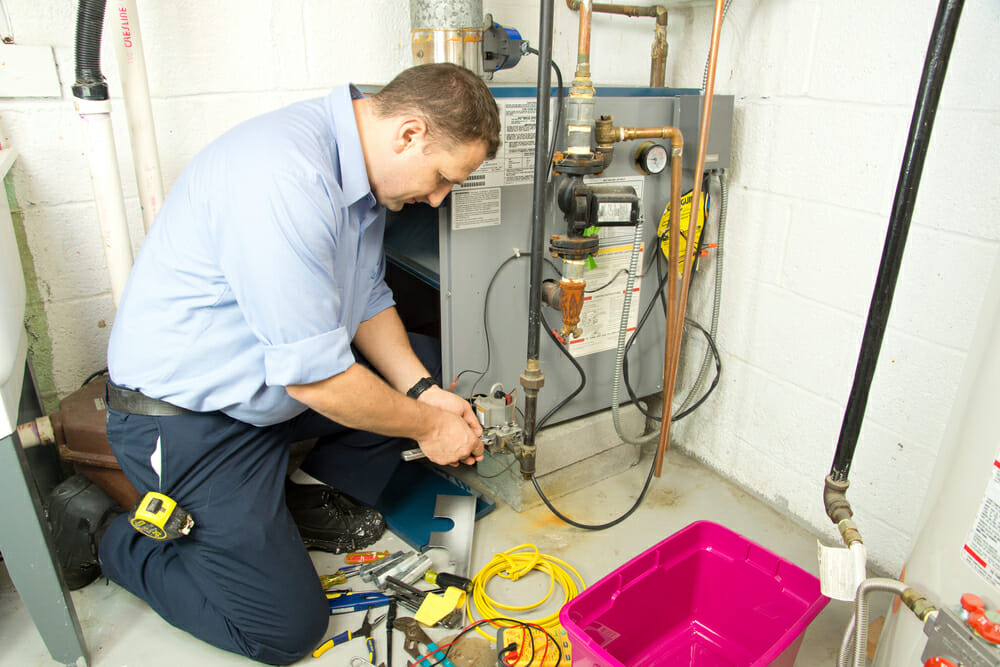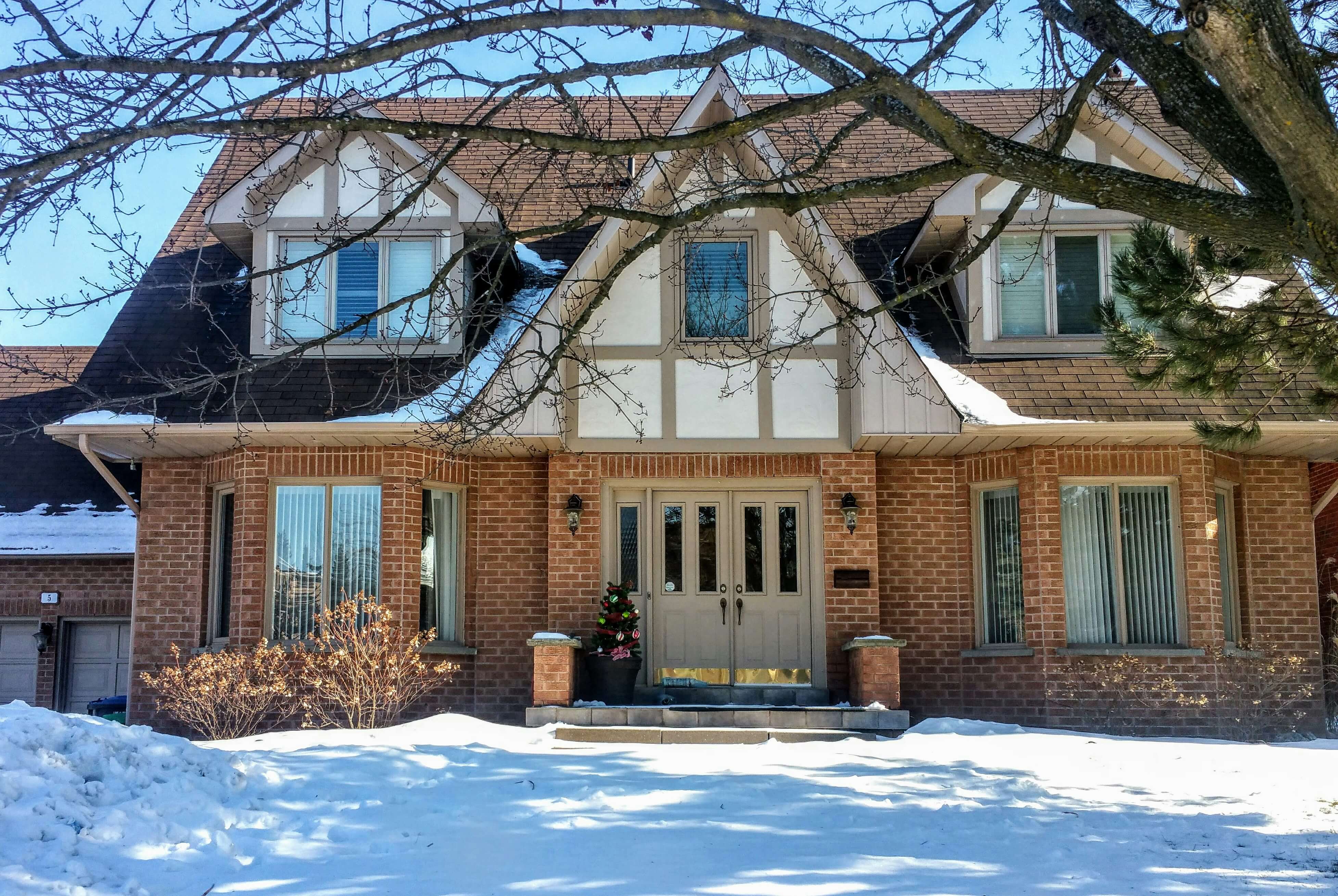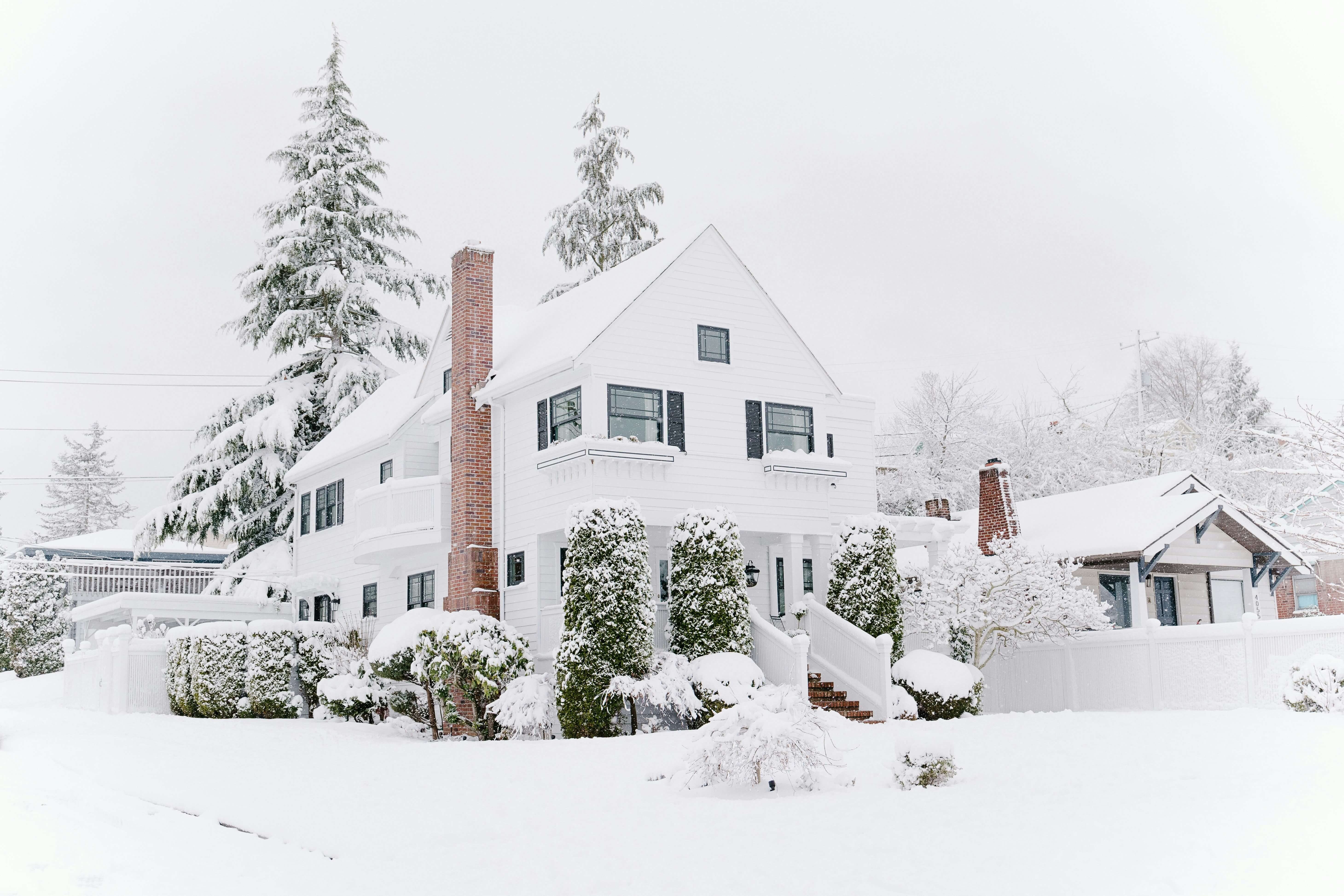How Much Does a Gas Furnace Installation Cost?
The cost of gas furnace installation depends on the size of your home, the type of furnace, and the complexity of the project. Typical costs include:
- New Furnace Unit: $956 to $3,870, depending on brand and efficiency
- Installation Labor and Materials: $1,000 to $2,500
- Full Replacement: $2,000 to $5,000, including removal of the old system and installation of the new one
Furnace Costs by Brand
Choosing a top furnace brand impacts overall cost, warranty options, and long-term reliability.
| Best Gas Furnace Brands | Average Furnace Cost | Average Total Installation Cost |
|---|---|---|
| American Standard Furnaces | $1,250 | $3,820 |
| Amana Furnaces | $925 | $2,285 |
| Bryant Furnaces | $985 | $2,770 |
| Carrier Furnaces | $1,100 | $2,995 |
| Daikin Furnaces | $2,600 | $4,885 |
| Goodman Furnaces | $755 | $1,950 |
| Lennox Furnaces | $1,425 | $3,790 |
| Rheem Furnaces | $1,250 | $2,905 |
| Ruud Furnaces | $1,100 | $3,200 |
| Trane Furnaces | $1,265 | $3,460 |
| York Furnaces | $830 | $2,200 |
| Average Gas Furnace Prices: | $1,226 | $3,115 |
FAQ: Furnace Installation Cost Based on Home Size
Wondering how much you’ll pay to replace a gas furnace based on the size of your home? Here are answers to some frequently asked questions about the cost of installing a new furnace based on square footage.
How Much Does a New Gas Furnace Cost for a 1,500-Square-Foot Home?
For a 1,500-square-foot home, you’ll typically need a furnace that produces 60,000 BTUs in a moderate climate. The average installed cost for this size system runs $3,500 to $7,000, depending on brand, efficiency, and installation complexity. Homes in colder regions may require a higher BTU rating, which increases cost.
How Much Does a New Gas Furnace Cost for a 2,000-Square-Foot Home?
A 2,000-square-foot home generally requires a furnace with about 80,000 BTUs of heating capacity. Homeowners can expect to pay $4,000 to $8,500 for a full replacement, including equipment and labor. Choosing a high-efficiency furnace (95%+ AFUE) may push the cost higher but can reduce long-term energy bills.
How Much Does a New Gas Furnace Cost for a 3,000-Square-Foot Home?
Larger homes of 3,000 square feet often need a furnace rated at 120,000 BTUs or more. Installing a furnace of this size usually costs $5,500 to $10,000+, depending on efficiency and whether ductwork updates are needed. In very cold climates, some homes may require two furnaces or a zoned heating system for maximum comfort and performance.
Cost to Repair a Gas Furnace
When deciding whether to install a new furnace, weigh the cost of repairs against the age of your current unit. The average repair cost is around $325, though it varies based on the issue. If your system is older, replacement may be more cost-effective.
Common Gas Furnace Repairs:
- Igniter Replacement: $150 to $300
- Blower Motor Repair: $400 to $1,200
- Thermostat Replacement: $150 to $500
Furnace Replacement vs. Repair Costs
A common guideline is the $5,000 rule. If the cost of repair multiplied by the age of your furnace is greater than $5,000, replacement is the better option.
For example, if your furnace is 10 years old and the repair is $480, that equals $4,800. That’s close enough to typical furnace replacement costs that a new unit would likely be the smarter investment.
Situations that may only require simple repairs include:
- Circuit Breaker Issues: A tripped breaker or blown fuse can cut power to your furnace.
- Airflow Problems: A clogged filter can restrict airflow. Replacing the filter is often an easy fix.
- Thermostat Malfunction: Low batteries, faulty wiring, or a bad thermostat may be the culprit.
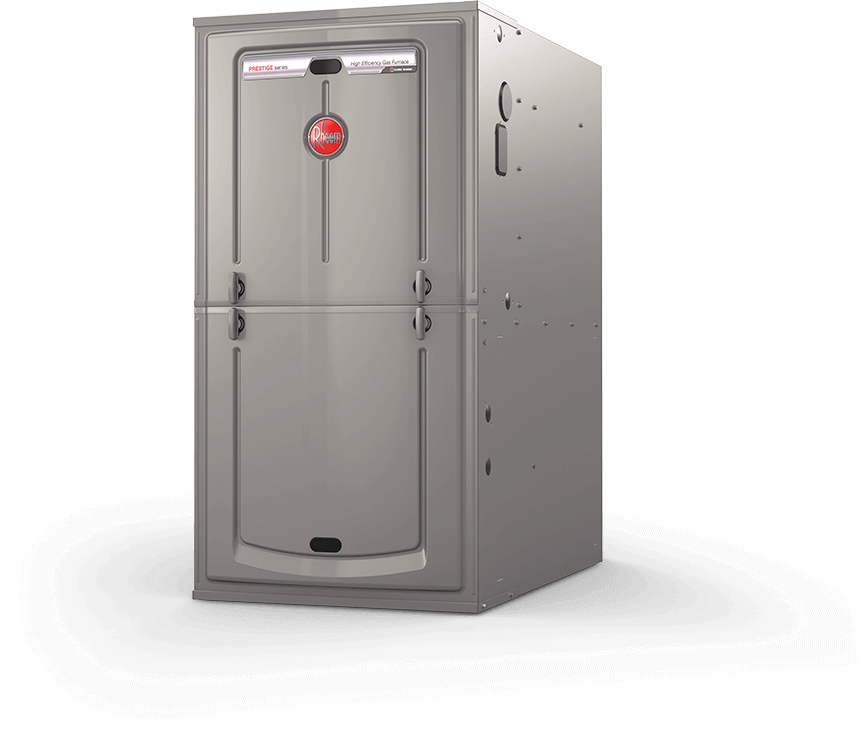
What Factors Affect Gas Furnace Installation Costs?
When installing a new furnace, costs are typically divided into:
- Furnace Unit: About 60% of total installation cost
- Labor: About 25%
- Additional Costs: Around 15% for disposal of the old unit, permits, and extra equipment
If you also need ductwork replacement, expect to pay an additional $300 to $585 per duct run.
Energy Savings & Return on Investment
Upgrading to a higher efficiency gas furnace (higher AFUE rating, properly sized, well installed) can significantly reduce heating bills and provide return on investment over time. A furnace with, say, 95%-97% AFUE may cost more up front but can lower fuel use by 10-30% compared to older or less efficient models. Over the lifespan of the unit (15-20 years), those savings often offset the higher initial cost.
Rebates & Incentives
- Utility Company Rebates: Many utilities offer rebates or incentives for installing high-efficiency or ENERGY STAR certified furnaces.
- State & Local Programs: Depending on your state or municipality, there may be additional incentives or programs to support efficiency upgrades, safety upgrades, or weatherization that apply when you install a new furnace.
Lifespan & When to Replace
Most gas furnaces last about 15 to 20 years with regular maintenance. If your furnace is older than 15 years, needs frequent repairs, or has declining performance, replacement is usually more cost-effective than continuing repairs.
Average Furnace Warranties
Typical furnace warranties usually cover:
- Heat Exchanger: Lifetime limited or 20-year limited warranty
- Main Components: Typically covers blower motor, igniters, controllers, and other key parts
Safety Considerations
Safety is key with gas furnaces. Be sure to:
- Have annual inspections for gas leaks, flue integrity, and carbon monoxide risk.
- Install and maintain carbon monoxide detectors in your home.
- Ensure proper ventilation and exhaust of combustion gases.
- Use tempered or safety glass and correct venting if required by local code.
Warning Signs You May Need a Furnace Replacement
Look for these indicators that a furnace may need full replacement rather than repair:
- Significant increase in energy bills without other changes in usage
- Uneven heating (some rooms much colder)
- Furnace is 15-20 years old or older
- Frequent breakdowns or escalating repair costs
- Unusual noises, smokes, or smells from the unit
Buying a New Gas Furnace
When buying a replacement furnace unit, it is important to know what you are looking for so you can make the best decision for your HVAC purchase. Here are a few things to keep in mind to make sure you get the best return on your investment:
- Should you repair or replace your broken furnace?
- Which gas furnace brand is best?
- What size gas furnace do you need?
- What energy efficiency level do you need?
Gas furnaces are a popular heating solution due to their efficiency, reliability, and cost-effectiveness. They use natural gas to heat air, which is then distributed throughout your home. Furnaces are usually paired with a central air conditioning unit. Whether you’re installing a new gas furnace or replacing an old one, understanding the costs and benefits can help you make an informed decision.
What Size Gas Furnace Do I Need?
Furnace size is measured in BTUs (British thermal units). As a rule of thumb, a home in Zone 3 requires 40 BTUs per square foot.
For a 2,400-square-foot home, that means a furnace with at least 96,000 BTUs.
What AFUE Rating Do I Need?
Most homes need at least an 80% AFUE rating. Furnaces range from 78% to 97% AFUE. Higher ratings increase upfront cost but reduce long-term energy bills.
Opting for an energy-efficient unit often pays off through lower utility costs over the life of the system.

Gas furnaces are the most popular home heating choice and fairly affordable in most cases. However, in the long run your energy bills will add up and it is always smart to opt for an energy efficient gas furnace from the get go. You will want to make sure you are getting a unit with a good AFUE rating (annual fuel utilization efficiency.) A new gas furnace’s price will rise with higher AFUE ratings, but that investment will help save you money over time.
Gas Furnace Installation Process
- Assessment: A contractor evaluates your home’s heating needs and recommends the right size and type of furnace.
- Preparation: Removal of the old system and preparation of the installation area.
- Installation: The new furnace is connected to ductwork and gas lines.
- Testing: The system is tested for safety and efficiency.
- Final Adjustments: Performance is optimized.
How Does a Gas Furnace Work?
Basic Operation
- The thermostat signals the furnace to turn on.
- Gas and air mix in the burner and ignite.
- Hot gases travel through the heat exchanger, warming air for circulation.
- Exhaust gases vent outside.
Burner and Thermostat Control
- Larger furnaces may have dual burners.
- The system runs until the set temperature is reached, then cycles off.
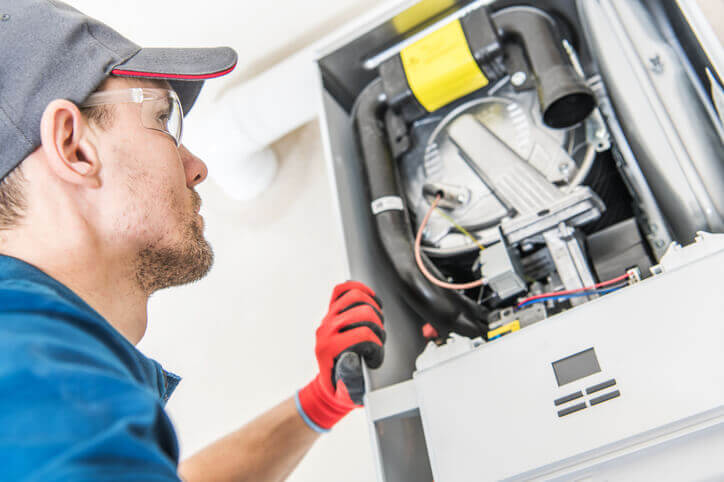
Blower Assembly
- A fan pulls in air through a return vent.
- Heated air is distributed through ducts connected to a plenum.
Humidifier Integration
- Some furnaces include humidifiers to counteract dry air.
- Older models may require manual filling.
Hiring a Gas Furnace Installer
Choosing the right contractor is as important as choosing the right furnace.
- Get multiple bids, but avoid selecting solely on lowest cost.
- Ask about equipment markups and hidden fees.
- Request a new thermostat if needed for compatibility.
- Ask for a detailed estimate, including manufacturer, model, and timeline.
- Verify furnace sizing calculations to avoid undersized or oversized units.
- Insist on name-brand equipment with warranties.
Finding the Right Furnace Contractor
When it’s time to replace your furnace, Modernize makes the process easier by connecting you with pre-vetted local contractors who understand the right sizing, efficiency standards, and installation practices for your home. We help you compare quotes, explore financing options, and find a trusted professional who can install your new furnace safely and efficiently. With our network of reliable HVAC experts, you can move forward with confidence knowing your project will be completed to code and optimized for comfort and savings.
Compare top-rated HVAC pros in your area.
Read real homeowner reviews, explore qualifications, and view promotions. Modernize makes it easy to browse professionals and find one that will be perfect for your project.





